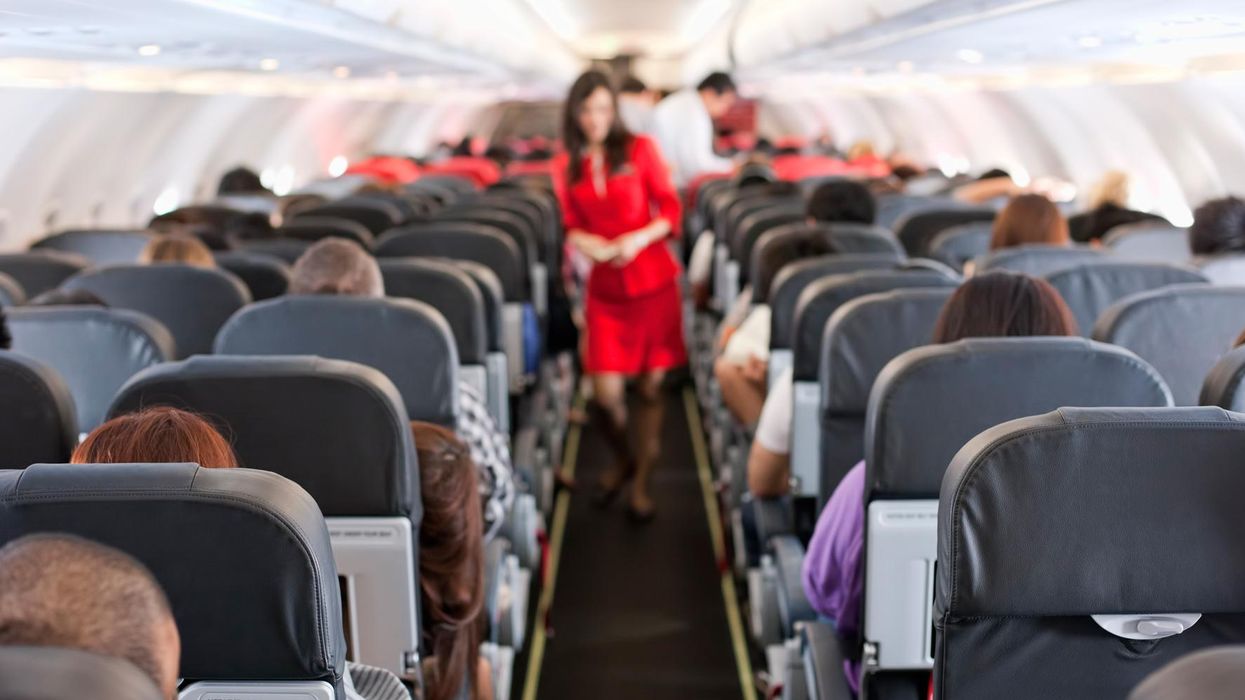
If you've ever been on a flight, you've probably experienced turbulence.
It's not fun, especially if you're already a nervous flyer.
But what actually is it?
Writing for Business Insider, pilot Patrick Smith explains what the "rough air" is and why you don't need to worry about it.
It's normal, and usually harmless.
Turbulence is completely normal and occurs on most flights.
It's annoying, but not a big safety issue.
Patrick Smith writes:
Every flight, every day, will encounter some degree of rough air, be it a few light burbles or a more pronounced and consistent chop that sometimes gets your coffee spilling and the plates rattling in the galley.
From a pilot’s perspective, garden-variety turbulence is seen as a comfort and convenience issue, not a safety issue per se. It’s annoying, but it is not dangerous.
Keep your seatbelt on.
Passengers can get injured on flights but it's very rare.
The majority of these aren't wearing their seatbelts when they should be, explains Smith. In the cockpit, pilots always keep their seatbelts on and are never 'lackadaisical' about it.
Pilots receive weather and turbulence forecasts before flying, Smith explains:
Once aloft we get periodic updates from our dispatchers and meteorologists on the ground.
We have weather radar in the cockpit, as well as our eyes to see and avoid the worst weather.
And perhaps most helpful of all, we receive real-time reports from nearby aircraft.
However, turbulence can still occur without warning - so it's always best to stay strapped in.
It doesn't cause crashes.
Thinking back over the whole history of modern commercial aviation, I cannot recall a single jetliner crash caused by turbulence.
Airplanes are engineered to withstand an extreme amount of stress, and the amount of turbulence required to, for instance, tear off a wing, is far beyond anything you’ll ever experience.
It's not like driving.
Smith warns that flyers should be weary of analogies and passenger accounts of rough flights in the news.
You might hear somebody compare turbulence to 'driving over a rough road,' or to 'a ship in rough seas.' I don’t like these comparisons, because potholes routinely pop tires, break axles and ruin suspensions, while ships can be capsized or swamped.
There are no accurate equivalents in the air.
...Be wary of passenger accounts in news stories. Not to insult anyone’s powers of observation, but people have a terrible habit of misinterpreting and exaggerating the sensations of flight, particularly if they’re scared.
Even in considerably bumpy air — what a pilot might call 'moderate turbulence,' a plane is seldom displaced in altitude by more than 20 feet, and usually less. Passengers might feel the plane 'plummeting' or 'diving' — words the media can’t get enough of — when in fact it’s hardly moving.
More: This is why you should always choose wine instead of coffee when flying













